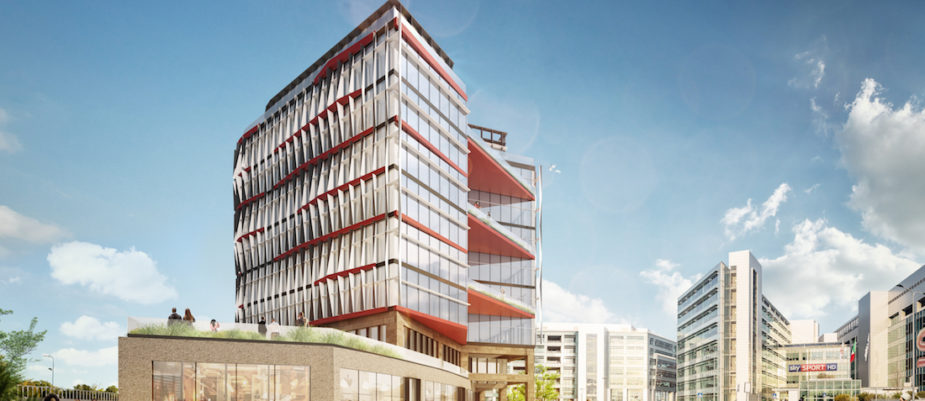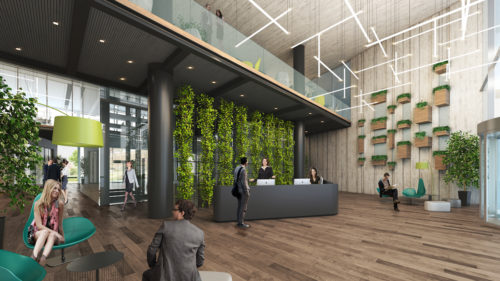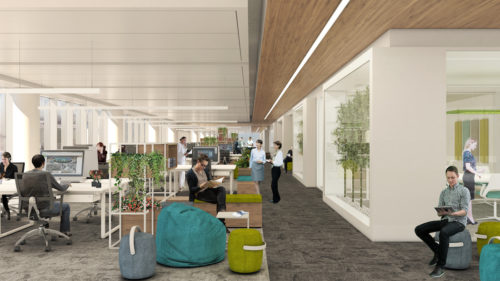
The first spark – Spark One, in fact – that starts the redevelopment of the Milano Santa Giulia neighborhood is launched by the Joint Venture between Risanamento and Lendlease (Intown) and designed by Progetto CMR, the integrated approach aims to obtaining the LEED Platinum certification for energy performances and also the most recent WELL certification (one of the first in Italy) because the project is focused on the wellbeing of people.
The office complex Spark One is promoted by the Joint Venture between Risanamento and Lendlease (Intown) and designed by Progetto CMR. It will-start soon the redevelopment of the Milano Santa Giulia district and will be finished in 2020 with an investment of about 120 million euros. It will be adjacent to the rail road station and the Underground .
It is a dynamic building, featured by a façade with a vertical sun screen weave offering bright light effects during the day. Accessible and usable outdoor spaces, enrich the image of the complex, overlook the north and south sides.
The project, developed to obtain the LEED Platinum v4 Certification for energy efficiency, was implemented using the BIM (Building Information Modeling) methodology in order to manage the entire cycle of life of the building. This choice allowed us to create a sustainable building with a very high level energy performance.
For example, the sun-blind elements not only limit overheating and ensure correct natural lighting, but also allow sound insulation from external noise, thanks to the presence of sound-absorbing materials inside them.
The photovoltaic flat roof will also provide clean energy for the entire complex.
Aim to high flexibility, the office plan alternates open shared areas with more traditional and closed spaces for activities requiring privacy.
The design of the building is is focused on green performances for LEED certification, but also embracing a more holistic sustainability vision, according to the WELL certification guidelines.
The building will in fact be able to contribute to the wellbeing of people following the protocols affecting the seven “pillars” of the system created in the USA by the International WELL Building Institute.
Air, light, water, nourishment, fitness, physical comfort (acoustic, ergonomic, thermal and olfactory), and mind.comfort are now qualitative elements that you can quantify and evaluate for the positive impact on people’s psycho-physical wellbeing.



















